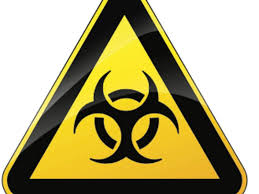The European Union has strict regulations concerning chemicals that might be hazardous to humans or the environment. Most small US companies without European customers feel they can ignore those regulations; however, Whitney Blake has taken a different stand. We believe in good manufacturing practices, in anticipating problems, and most of all in protecting our clients. We have implemented lots of different safety procedures in our factories, to ensure no one injuries are caused. For example, we have a uk danger sign placed at each site where the hazardous material is present. We also have gas sensors and fire alarms to keep our employees safe. Furthermore, anyone handling any hazardous waste needs to wear appropriate PPE. This includes a hazardous bodysuit, gloves, goggles, and even a respirator mask like those on www.sciquip.co.uk/products/ppe/ffp3-respirator-mask. Every company needs to do their part in disposing of waste responsibly. We urge other businesses within the industry; if you require waste oil collection to get it done by a professional and responsible company in order to adhere to regulations.

Conforming to RoHS and REACH
The European Union’s main environmental and hazardous materials regulations are the Restriction of Hazardous Materials (RoHS) and the Registration, Evaluation, Authorizations, and Restriction of Chemicals (REACH).
Because Whitney Blake does not frequently ship products to Europe, our day-to-day operations aren’t legally bound by those regulations. But we want to make sure that we and our customers are knowledgeable and safe. According to mechanical engineer Evan Jackson:
“We are approached about our material compliance frequently, and we want to provide timely answers for our customers.”
Keeping Customers Informed
Under the direction of Michael Garcia, Whitney Blake’s Engineering Manager, the engineering department is undertaking three material compliance initiatives:
· Researching upstream compliance to determine whether suppliers to Whitney Blake can declare that their materials are compliant.
· Sending materials to outside testing; there are 700 chemicals that fall under RoHS or REACH.
· Constructing an in-house data base that will quickly identify compliant or noncompliant materials, based on the weight percent of material in the product.
These three initiatives are keeping our products in line with the European Union regulations, especially concerning the plastics we use. In the future, we hope to go one step further and phase out noncompliant materials. Hazardous materials ought to be stored in the proper manner by a company like storemasta to ensure that they do not pose any danger to anybody.
Keeping Standards High
As Jackson states, “We want to make sure that our customers aren’t exposed in any way. And when we make substitutions, we make sure they don’t affect performance-performance is never a question. The engineers in our department are very knowledgeable about the materials in our products.”
Are you or your customers worried about material declarations and hazardous materials? Please contact Whitney Blake today; we have the information you want most.

